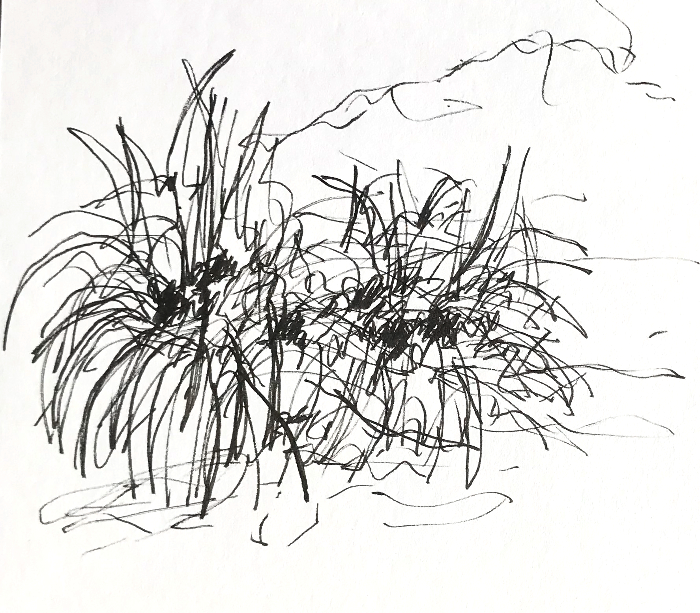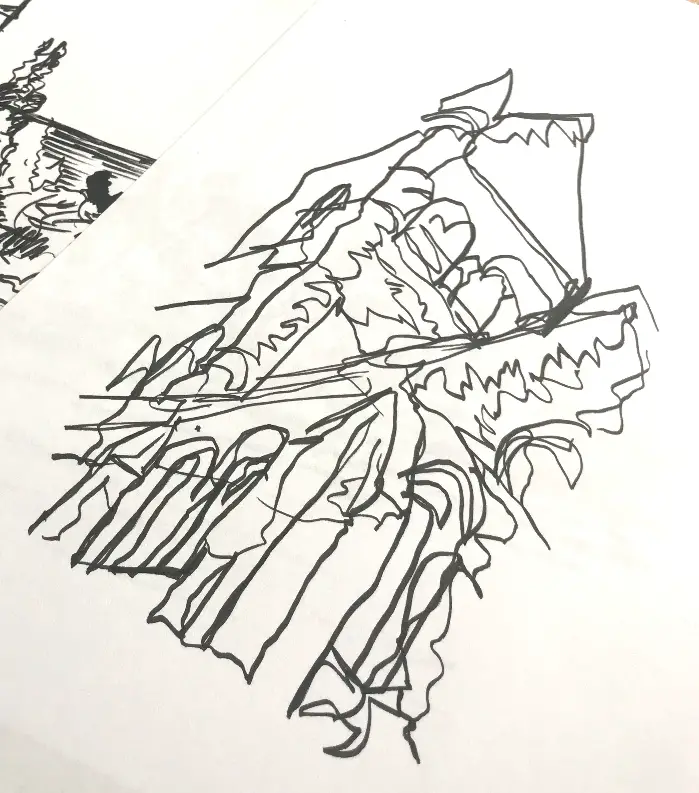Blind Contour and Contour Line Drawing?
There is a big difference between contour drawings and contour drawing exercises. The same will apply to find out the difference between blind contour and contour line drawing. What this article will help clarify are the differences between the types of contour drawings.
WHAT IS THE DIFFERENCE BETWEEN BLIND CONTOUR AND CONTOUR LINE?
The simple difference that you can find between these two styles is straightforward to define in simple words. A contour line drawing is when you will draw an object on a piece of paper using simple outlines and primary detail lines for any fine detail. Contour line drawing also allows you to look at your model or object and at your drawing paper. This helps you to make a contour drawing appear cleaner and more accurate.
Blind contour line drawings are very different since they use the same process of looking at an object and draw it on paper. The specific rule that applies to blind contour is not allowing yourself to look at the paper you are drawing upon. Instead, you need to remember your hand placement and follow where details are being drawn. You will also need to use a mental picture to perceive where specific details are being drawn.
The two finished drawings will be very different from you might have expected them to turn out. They will also appear to have been drawn by two different people completely. Some art fans and critics have a genuine love for blind contour art since it has such a raw and chaotic appearance. This can turn mediocre contour drawings into fabulous blind contour drawing works of art.
This technique was originally called Pure Contour Drawing and was published in a book on drawing instruction in 1941. The book was titled: “The Natural Way to Draw” by the artist and author Kimon Nicolaides. Later, it was popularized by artist Betty Edwards in her book “The New Drawing on the Right Side of the Brain,” where she used the ‘pure contour drawing' method to tout what is now commonly called blind contour drawing.
YOU ALSO MAY LIKE:
- How to Draw Without Looking at the Paper
- How Do You Draw a Blind Contour Drawing?
- Drawing with Lines and Shapes
- Line Drawing Techniques
WHAT ARE CONTOUR LINER DRAWINGS?
There is more than one type of contour drawing that you can practice on your own. With each technique, you'll learn specific aspects of contour drawing that give each type its own signature and value. The one obvious detail that stands out with contour line drawings is the outer contour line that forms the outside edge. This is essentially the whole reason why a contour drawing is given its actual name.
Contour drawing is unique, being that it doesn't contain any shading within the drawing itself. While many contour drawings will focus on the outside edge, the trick to making a contour drawing is to focus less on repeated glancing at your drawing paper. You want to train your hand and cognitive memory to recall where your hand is placed so that a drawing can be completed in less time.
That doesn't mean that you'll need to look at your paper if the exercise doesn't call for it. Certainly, blind drawing and continuous line drawing require that you don't look at your contour line while these are being drawn. The whole point of many contour line drawings is to train your hand what your eyes are tracing in real-time. The less eye contact you have with your paper helps you become more proficient at laying down contour lines.
DRAWING EXERCISES
There are some useful drawing exercises that I highly recommend to help flesh out your contour drawing skills. Each contour-based project will have a different goal with results that will all have different outcomes. But the goal that each of them will offer will teach you aspects of how you can strengthen your mental and memory skills.
WHAT DOES A BLIND CONTOUR DRAWING MEAN?
These are drawing exercised that can include the blind contour drawing and the continuous line contour. There are also some exceptions to this, including contour drawings to some degree if you wish to glance at your drawing to get your hand location corrected. The continuous line contour drawing is also an option to have one exercise that will allow you to look at your paper.
The whole point is to get you used to not looking at your paper as you make a contour drawing. With each practice session, you'll find that your contour lines will improve bit by bit. Since it's not easy to draw just by using contour lines, you have to rely on your memory skills and how your hand can retrace the lines that your eyes can see. Even if you're not the most confident at not looking at your paper, you must resist as much as possible.
Most art experts agree that blind contour drawing is training your brain to follow an outline that isn't inspired by artistic expression. These are drawings that come from the left side of your cognitive and problem-solving portion of your brain. Every drawing will represent a part of your mind that translates a visual image onto paper. When you don't concentrate on what is being drawn, how final contours appear different from what you expected.
WHAT ARE THE 3 TYPES OF CONTOUR DRAWING?
There are three types of contour drawing projects that you are allowed to look onto your paper. Two of them you will certainly need to look at your paper; otherwise, they will be utterly unrecognizable as contour drawings. These are exercises that all have unique outcomes and help to further your skills at drawing contour lines. Each one of them also offers unique drawing styles that might appeal to your artistic senses.
• Continuous Line Contour
This type of contour drawing is a single line that isn't broken when you start until the time you finish. What's interesting about this style is that you'll need to be creative where intersecting lines create detail. To make a successful continuous line drawing, you'll need to start from one side of your object or model, slowly moving to the opposite side. You can choose to look at your drawing or do it blindly, but it does have exceptions of glancing too.
• Modified Contour
You've seen these types of drawings before that appear like uncolored comic book drawings. These often include objects that we see in real life and aren't limited to portraits and human figures. I relate these drawings to look like a comic book style because the suggested shadow line is often a thicker line that is where a shadow would be seen. Since contour drawings don't have added shadow, thicker and thinner lines are totally allowed.
• Cross-Contour
It's strange how our mind will perceive curved lines to see three-dimensional objects. The secret to creating a cross-contour drawing is following any object's natural shape in the same direction that the curves naturally follow. This is much like drawing concentric lines that define how an object appears. It's easier to think about actually drawing these lines on an object so you can recreate these drawings easier.
WHAT ARE THE TWO RULES OF BLIND CONTOUR DRAWING?
Go figure that two rules apply to blind contour drawing. Don't expect you'll be rebuked by your art teacher, as I experienced years ago. But rules are rules, and they teach you how to maintain strict artistic training. The first rule is your pencil cannot lift the surface of the paper once you start drawing. The second is not looking at your paper at all, no matter how your drawing will turn out.
Even in some exercises that do allow you to glance at a drawing for a second, it's to reposition your lines without losing the continual line that's drawn. Now, these rules can be modified if you're making cross-over blind drawings. But this begs to ask the question. Why you want to ruin the ability to train your hand to follow what your eye is tracing. This gives you greater control and the ability to draw objects without needing to look at your paper.
FINAL WORD
I know that some of these drawing exercises may seem to be outdated or not essential for making traditional sketches and drawings. You would be surprised how these can improve your drawing skills. Not to make you a better sketch artist, but to draw your ideas as you need without having to take so much time to sketch quick ideas. This can come in handy for creating whipped-out thumbnails of concept cars or character poses.
All you need to do is try many of these contour line exercises to become familiar with how they work. Each of these exercises will also give you a different way to view your art skills that show a different side of your creative thinking. Hopefully, this gives you a better idea of what are contour line drawings are all about.
Sources:




